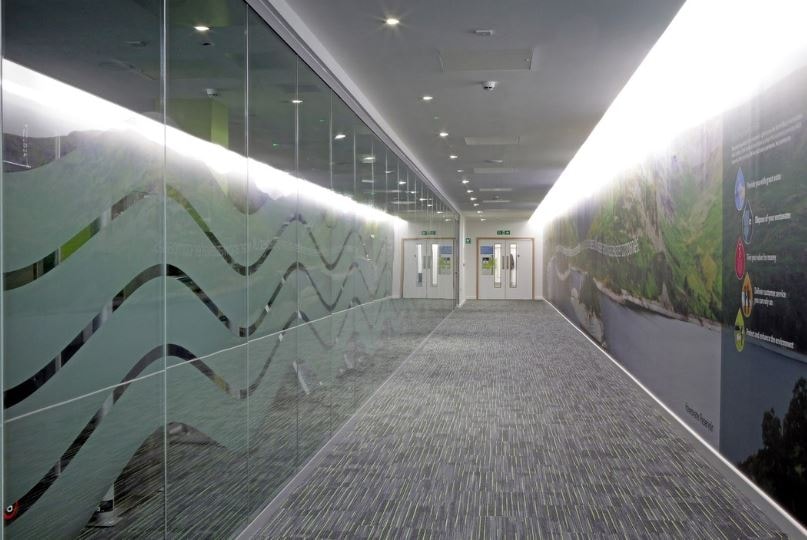When Was Glass Invented? The History Of Glass
Glass surrounds us in countless forms, from the windows that brighten our homes to the screens of our smartphones, from elegant tableware to ornaments and more. Wondering when was glass invented? In this comprehensive guide, we’ll trace the fascinating timeline of glass development, from its discovery to its position today.
When Was Glass Invented?
The precise moment of glass’s discovery remains shrouded in the mists of prehistory. But archaeological evidence points to its emergence over four millennia ago. The earliest deliberately created glass objects date back to approximately 3500 BCE in Mesopotamia.
Naturally occurring glass had been known to humans long before intentional manufacturing began. Volcanic glass, particularly obsidian, was highly valued by Stone Age toolmakers for its sharp edges and durability. This naturally formed glass resulted from the rapid cooling of silica-rich lava and was extensively traded across prehistoric communities due to its relative scarcity and usefulness.
The transition from utilising natural glass to manufacturing it artificially represents one of humanity’s most significant technological leaps. Early glassmakers likely discovered the process through experimentation with other high-temperature crafts like pottery.
Ancient Glass Discovery
The discovery of glass dates back to ancient times. With evidence of glass production found in Mesopotamia, Egypt, and Syria around 3500 BCE. Early glassmakers discovered that heating a mixture of silica-rich sand and soda (sodium carbonate) to high temperatures resulted in molten glass, which could be shaped and formed into various objects. These early glass objects, often coloured, were primarily used for decorative purposes, such as beads and jewellery.
Industrial Revolution and Glass Manufacturing
Mechanical innovations, new energy sources, and scientific advancements combined to revolutionise previous glass making practices.
In 1887, the first semi-automated bottle-making machine was introduced in Castleford, Yorkshire, capable of producing up to 200 standardised bottles per hour. This marked the beginning of truly mass-produced glass, dramatically reducing costs and increasing availability.
Specialised Glass Innovations

The 20th century saw an explosion of specialised glass types developed for specific applications, each with carefully engineered properties.
Laminated glass, developed in the early 1900s, represented a major safety advancement. This type of glass is now common in architectural applications where safety is paramount, such as rooflights and glass railings.
Tempered glass, when broken, shatters into small, relatively harmless pieces rather than sharp shards. This safety feature made tempered glass ideal for car windows, shower enclosures, and glass doors.
Glass in Modern Architecture
Advanced manufacturing techniques and engineering innovations have transformed glass. Once a fragile material, it is now a structural element capable of supporting significant loads.
Structural glass systems allow for the creation of seemingly impossible features like all-glass staircases and transparent floors. These applications rely on laminated and tempered glass components engineered to precise specifications, often incorporating multiple layers for strength and safety. The development of flat glass, particularly through the float glass process pioneered by Sir Alastair Pilkington, has been pivotal in producing uniform and high-quality glass sheets that are essential for modern architecture.
Energy efficiency has become a crucial consideration in architectural glass. Low-emissivity (low-E) coatings, microscopically thin layers applied to glass surfaces, significantly reduce heat transfer while maintaining transparency. These coatings can be engineered to allow sunlight in while reflecting interior heat back into the building in cold climates, or to reflect solar heat while allowing visible light through in warm regions.
Smart glass technologies represent the cutting edge of architectural glass innovation. Switchable glass can switch from transparent to tinted at the touch of a button, eliminating the need for blinds or shades while improving energy efficiency.
A Brief History of Glass Windows
The history of glass windows dates back to ancient times, with evidence of glass windows found in ancient Rome and Egypt. However, it wasn’t until the Middle Ages that glass windows became a common feature in buildings.
The first glass windows were made using a technique called “crown glass,” which involved blowing a sphere of molten glass into a bubble, then spinning it into a circular sheet. This method produced small, circular panes of glass that were often used in windows, providing both light and protection from the elements.
In the 17th century, the development of “plate glass” revolutionised window glass production. This technique involved pouring molten glass onto a flat surface, where it was allowed to cool and solidify. Plate glass produced larger, flatter panes that were more suitable for windows, enhancing both functionality and aesthetics.
The Industrial Revolution brought significant advances in glass production, with new machines and techniques enabling mass production. This period saw the rise of stained glass and lead glass, adding decorative and artistic elements to windows.
Today, glass windows are ubiquitous in buildings worldwide, serving various purposes, including insulation, decoration, and safety. Modern techniques, such as float glass, have made it possible to produce large, clear panes that enhance both the functionality and beauty of architectural designs. The history of glass windows is a testament to the continuous innovation and evolution in glass manufacturing, shaping the way we live and work.
Why Choose UKO Glass?
At UKO Glass, we honour the rich history of glass by offering a diverse range of high-quality glazing solutions tailored to modern needs. From energy-efficient double glazing to bespoke oversized units and more, our products combine craftsmanship with cutting-edge technology. Want to find out more? Contact us today on theteam@ukoglass.co.uk.
